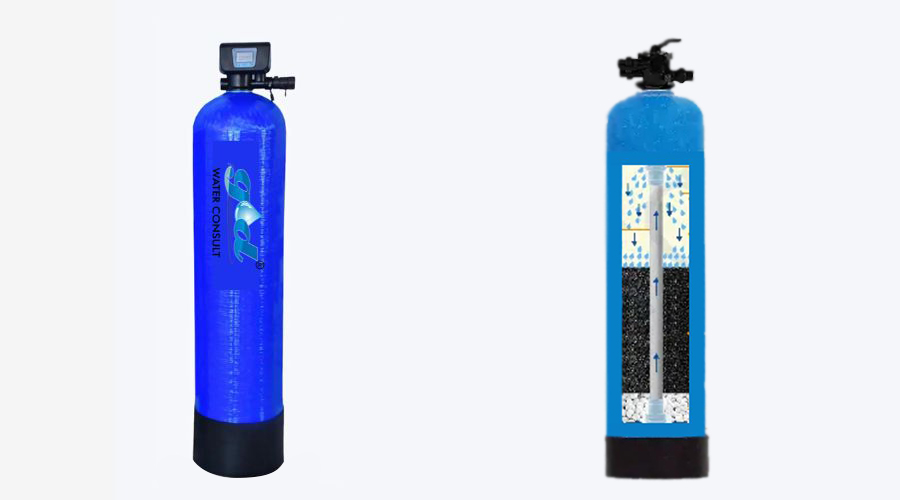When it comes to water purification, sand filters and carbon filters are two of the most commonly used filtration systems. Though both aim to provide cleaner, safer water, they serve very different purposes. Let’s understand how they work, where they’re used, and which one is right for you.
1. What is a Sand Filter?
A sand filter is a type of mechanical filtration system that removes suspended particles, dirt, silt, and sediment from water. It typically consists of multiple layers of sand and gravel that trap larger impurities as water passes through them.
How it works:
-
Water flows downward through layers of sand.
-
Dirt, debris, and suspended particles are trapped in the sand bed.
-
Clean water emerges from the bottom.
Uses of Sand Filters:
-
Commonly used in swimming pools, water treatment plants, and large tanks.
-
Ideal for removing turbidity (cloudiness) caused by sediments.
-
Often used as a pre-filtration system before other types of filters.
Who needs it:
-
Households or industries with visibly cloudy or muddy water supply.
-
Residential complexes using borewell or municipal water with high sediment load.
2. What is a Carbon Filter?
A carbon filter, also known as an activated carbon filter, uses charcoal or activated carbon granules to remove chemical impurities, chlorine, pesticides, and odor-causing compounds from water.
How it works:
-
The porous surface of activated carbon attracts and traps impurities.
-
It absorbs chemicals and organic compounds that affect taste and odor.
-
The result is cleaner, better-tasting water.
Uses of Carbon Filters:
-
Commonly used in RO systems, water purifiers, and kitchen filters.
-
Removes chlorine, bad taste, odor, and organic chemicals.
-
Enhances the taste and smell of drinking water.
Who needs it:
-
Households that already have basic filtration but need to remove chlorine or improve taste.
-
Offices and restaurants that rely on purified, odor-free water for beverages and food preparation.
3. Key Differences Between Sand Filter and Carbon Filter
| Feature | Sand Filter | Carbon Filter |
|---|---|---|
| Function | Removes dirt, sand, and sediments | Removes chlorine, odor, and chemicals |
| Filtration Type | Physical/Mechanical | Chemical/Adsorption |
| Water Clarity | Improves turbidity | Improves taste and smell |
| Best Used For | Muddy or cloudy water | Treated water with chemical taste |
| Maintenance | Requires backwashing | Requires cartridge replacement |
| Cost | Lower | Slightly higher depending on type |
4. Which One Should You Choose?
Your choice depends on the type of impurities in your water:
-
If your water looks cloudy or contains visible sediments, start with a sand filter.
-
If your water has a bad taste or smell due to chlorine or chemicals, go for a carbon filter.
-
For best results, both filters are often used together — sand filters as the first stage and carbon filters as the second, ensuring both clarity and purity.
Check out our Organic Waste Composting Machine
Final Thoughts
Both sand and carbon filters play a vital role in maintaining water quality. While the sand filter focuses on physical cleaning, the carbon filter ensures chemical purification. Choosing the right one — or a combination of both — ensures safe, clean, and great-tasting water for your home or business.
If you’re unsure which filter suits your water quality, consider getting a water quality test done to check for TDS, pH, turbidity, and chlorine levels before installation.
Buy Sand Filters & Carbon FIlters from GD Water Consult





2 Comments
John Doe
Posted on: March 13, 2025Leverage agile frameworks to provide a robust synopsis for high level overviews. Iterative approaches to corporate strategy foster collaborative thinking to further the overall value proposition.
John Doe
Posted on: March 13, 2025Leverage agile frameworks to provide a robust synopsis for high level overviews. Iterative approaches